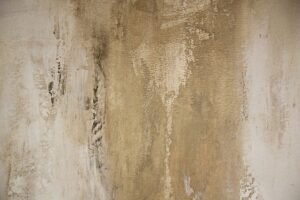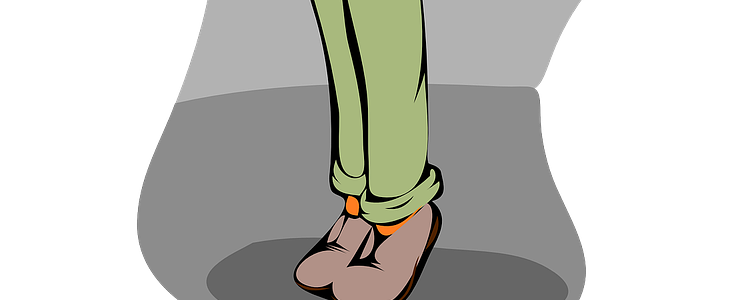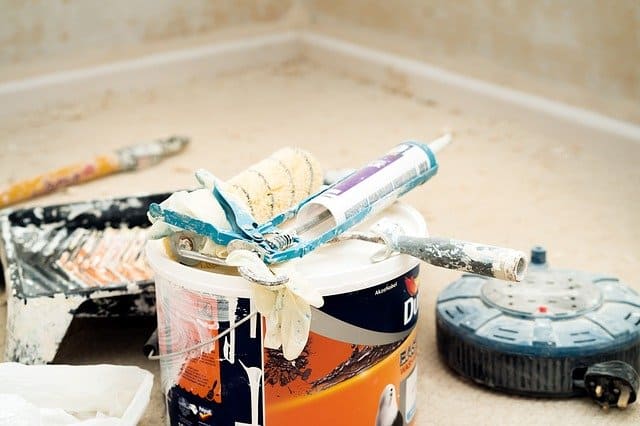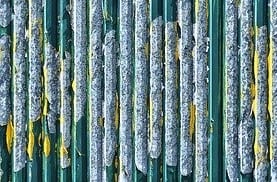How to Remove Acrylic Paint from Canvas
Removing acrylic paint from canvas becomes challenging, especially when the paint has dried out. How you can clean paint spots or the entire canvas? Which method works best? Is the washing machine safe? 
So, here’s how to remove acrylic paint from the canvas; by either using denatured alcohol/isopropyl alcohol, mineral spirits, ammonia, turpentine, or acetone/nail polish.
These solvents clean both wet and dry acrylic paint effectively if the right procedure is followed. You can effectively carry out optional cleaning methods such as spot cleaning, stripping/full canvas cleaning, and final cleaning without any problem.
Alternatively, you can use commercially available products such as Dumond Paint remover, Grandma’s Secret GS7001, or Wegner spray paint remover. But you will need to check on the material specifications and match them with the best paint remover.
Details: How to Remove Acrylic Paint from Canvas
a. Denature Alcohol or Isopropyl alcohol
Dilute one liter of denatured alcohol with two liters of water (1:2 ratio). Using a sponge, rub the surface with acrylic paint gently. This solvent will remove wet acrylic paint instantly upon contact.
For dry acrylic paint, you will need to quench the surface before stripping. Denatured alcohol contains strong, active agents (ethyl 5%) that break down the paint molecular bond into a thick paint viscous fluid, which is easier to clean.
Beside, denatured alcohol penetrates the canvas without affecting the material fabric. For a thicker layer of acrylic paint, isopropyl alcohol is suitable. Further, you will need to use a concentrated solvent to improve the bond-breaking affinity during action time.
Notably, denature alcohol irritates the skin and nasal cavity; thus, you should wear protective gear when cleaning. See Also: Can You Use Acrylic Paint On Metal?
b. Mineral spirit
Mineral spirit is an organic solvent that works best for dry acrylic paint. The unique chemical formulation that comes with mineral spirit is self-activation and acts instantly upon contact.
You will need to dilute mineral spirit slightly when applying over a thin acrylic paint layer. However, for a thicker acrylic paint layer, a higher mineral spirit concentration is needed for a complete breakdown of paint molecular bonds.
Further, apply acrylic gesso to prime the dry canvas for quick quenching and easier stripping. Mineral spirit is poisonous when swallow and should therefore be stored away from kids and pets.
See Also: Acrylic Paint for Pouring ed
c. Ammonia
Mix a cup of ammonia with three cups of clean water. Using a sponge, smear the acrylic painted area (spot). Leave it for 5 minutes to quench (for dry paint) before stripping.
In case you want to clean the entire canvas, you will need to soak it (canvas) in an ammonium solution before stripping.
Wet paint is easily cleaned using a piece of cloth or sponge, while dry acrylic paint needs a primer before the solvent application. A paintbrush is required to clean the surface after the quenching process is complete.
Remember, ammonia emits poisonous gases that may choke or irritate the respiratory system. The solvent cause skin burn or irritation too.
d. Turpentine
Apply turpentine over the acrylic painted canvas and leave it for 6 minutes. Then, wash using soapy detergents until the paint is entirely cleaned.
The turpentine has strong, active agents, which helps in the breakdown of acrylic paint molecular bonds on contact. The high affinity of the solvent gives it instant action power for both wet and dry acrylic paint.
Turpentine is best when used over spot paint than complete stripping. After removing paint, you will need to clean the canvas with soap to eliminate the turpentine residue and acrylic resin that is denatured.
Turpentine has a deep unpleasant scent; therefore, you should wear a respirator and hand gloves during application.
e. Acetone
Acetone is a resilient acrylic paint remover that features a complex chemical structure, which is self-activating upon application. The solvent penetrates thick acrylic paint in a couple of seconds and will not affect the canvas during paint removal if the right concentration is maintained.
You will need to mix one liter of acetone in a basic and soak your acrylic painted canvas for 3 to 6 minutes. Then, wash the canvas with soapy detergent before rinsing to dry.
Excess concentration of acetone may deface the canvas – it is necessary to carry out a drop test experiment before you start removing paint to ascertain acetone efficiency.
Notably, acetone irritates both skin and nasal cavity. It is poisonous when swallowed.
Cleaning Process of Different Canvas Sections Stained by Acrylic paint
a. Spot Cleaning
Prepare acrylic cleaning solvent and put it in a bottle or spray can. Gently, spray or rub over the acrylic painted area on the canvas. Leave to quench fo0r 5 to 10 minutes (for thick layers) before stripping or wiping the stain.
Alternatively, you can dip the section with acrylic paint for professional artists in a paint remover and scrape off using a knife or scalpel.
You must be very precise when carrying out spot cleaning since the paint remover may affect the marginal areas. Further, you should rinse the spot area with soap and clean water to eliminate acrylic paint remover residuals.
b. Stripping or Full Canvas Cleaning
To carry out the entire canvas stripping, you will need a large basin with acrylic paint remover (prepared compound). Ensure the solvent is in the right concentration before soaking the canvas for 30 minutes.
Wash the canvas with a paintbrush to remove the quenched layer. Repeat the procedure until the acrylic paint layer is entirely removed.
Transfer the canvas into a basin with soap detergent and wash out the paint remover residual before drying under the sun.
NB: When cleaning, avoid direct contact since most acrylic paint removers irritate the skin upon contact (wear hand gloves).
c. Final Cleaning
Final cleaning is carried out after the complete removal of acrylic paint has happened. This process is put in place to eliminate the paint remover residuals and acquire an excellent finish.
You will need to clean the canvas (after stripping acrylic paint) using soapy detergent and clean water. Rub the canvas with the paintbrush thoroughly to remove traces that may be stuck within the fabrics.
Eventually, rinse the canvas with plenty of clean water before drying. The pressure cleaner works best in the final finish process. See Also: Can you use WD 40 Remove Paint?
You should be carried out precise final cleaning without affecting the adjacent area – for the spot cleaning method. You may also require to stretch the canvas evenly for better cleaning accessibility.
Safety and Precautions to consider when Removing Acrylic Paint from Canvas
While the acrylic paint removal process can be enjoyable, it may lead to fatal accidents or death if safety is not considered.
First, most acrylic paint removers are flammable, and thus fire may result if precautions are not adhered to.
Therefore, before you begin the paint removal process, ensure that you follow the safety rule and precautions highlighted below.
- Never inhale any solvent as a way of testing concentration – ammonia is highly poisonous.
- Wear facemask, eye protection, and hand gloves when mixing and cleaning acrylic paint from the canvas. This act boosts your safety.
- Please do not attempt to mix two or more solvents in the name of improving their action affinity. This may lead to an explosion or destroy the canvas.
- Ensure your room or space is well ventilated when removing acrylic paint from the canvas. Usually, acrylic paint removers like denatured alcohol, ammonia, turpentine, etc. fill the room and may choke you to death if inhaled. Besides, the humid concentration may trigger a fire.
- Never use acrylic paint removers near a fireplace – most of them are flammable, eg., isopropyl alcohol.
- Keep acrylic paint removers away from pets and children – they are poisonous when swallowed eg. ammonia, turpentine, etc.
- Always read the labels f any commercial acrylic paint remover and use it for the recommended surfaces.
- It would help if you carried out a drop test experiment before commencing the process of acrylic paint removal.
NB: Seek immediate medical attention if you swallow any other solvent indicated in this article. If you get into skin contact with any solvent, wash the area with plenty of cold water.
See Also: Nail Polish Remover for Removing Paint?
Steps to Follow when Removing Acrylic Paint from Canvas
Usually, each of the acrylic paint removers has a procedural limitation during application. However, there are basic steps that must be followed to achieve excellent acrylic paint removal.
The 99% of the laid steps below work incredibly for any of the above acrylic paint removers.
You will need the following items too: paintbrush, basin, clean water, soap detergent, scraper, Acrylic gesso, sponge/a piece of cloth, clean water, and acrylic paint remover.
The following steps are recommended during acrylic paint removal from the canvas:
- Wear eye protection, gloves, and a respirator before you start the acrylic paint removal process.
- Pre-clean dried acrylic paint on the canvas using a paintbrush (for dry paint) – pass air over wet acrylic paint to remove dirt. Do not touch.
- Prepare acrylic paint remover in basic. Ensure it is in the right concentration. For commercial acrylic paint removers, check whether it’s best used directly.
- Carry out a drop experiment to ascertain the effectiveness of the solvent on the painted area.
- Soak the sponge in solvent solution and smear or apply over the acrylic paint entirely. For spot paint cleaning, you will need to administer precise drops tile the acrylic paint is fully covered.
- Leave the canvas to quench for 4 to 15 minutes. Then, scrape off the cured acrylic paint using a scraper or knife.
- Wife off the residue with paintbrush gently – avoid over pressing when cleaning.
- Soak a piece of clean cloth in soapy detergent and rinse the surface. You will need to wash the whole canvas in soapy water to remove the traces of acrylic paint removers – for the full cleaning method.
- Rinse the soap with plenty of clean water and dry it under the sun.
- Repeat this procedure for any of the above acrylic paint removers.
NB: Avoid using excess abrasive force when cleaning (prevents canvas resin removal). Essentially, apply the solvent according to the thickness of the acrylic paint layer.
See Also: Using Goo Gone to Remove Paint?
Commercial Alternatives for removing acrylic Paints form canvas
Alternatively, you can opt to buy commercially manufactured acrylic paint remover, as highlighted in this article. Do not forget to read and follow the instruction given for each item.
a. Grandma’s Secret GS7001 Laundry Spray
Grandma’s Secret is a USA-made spray stain remover that features a strong, non-toxic solvent, which will not irritate your skin upon contact.
The super active ingredients in Grandma’s Secret are self-activating and act instantly on contact. The solvent penetrates deep into the dense acrylic paint layer in a couple of seconds and will not affect the canvas fabrics.
Besides, Grandma’s Secret comes with a classic trigger and adjustable nozzle that allows point application – best for spot acrylic paint removal too.
Notably, you can use this solvent in cleaning other kinds of stains such as grease, make-up, grass, oil stain, clay, inks, tar, coffee, blood, and rust.
b. Dumond Paint Remover
Dumond is an advanced paint remover that is 100% biodegradable. The product is specially formulated with simple action ingredients that remove over 15 types of paint without much problem.
Moreover, Dumond is packed in a large container that covers a large area. The water-based solvent is highly soluble and easier to clean.
Indeed, Dumond works in seconds upon application and lacks harsh chemicals that may irritate your skin upon contact.
Further, Dumond comes with a highly portable container that is simple to cork during application. Notably, this solvent is odor-free and integrates a long-lasting effect.
c. Fuller Brush Pre-Laundry Stain Remover
Fuller Brush is a washable stain remover that effectively works for water-based paint and oil-based paints without any problem. The product is packed in a classic canister that allows precise application- eliminates spillages.
The Quick-action ingredients have a high affinity that instantly breaks the acrylic paints forming a thick viscous liquid, which is easier to clean.
Besides, Fuller comes with a natural citrus scent and lacks harmful phosphates.
NB: Fuller is flammable and irritates both eyes and skin upon contact – wear protective gear.
Conclusion
Removing acrylic paint may be made easier if you use paint cleaners like denatured alcohol, mineral spirit, ammonia, acetone/nail polish, or turpentine.
These solvents feature strong active agents that break wet and dry acrylic paint into a thick viscous fluid –faster to clean. The right concentration and procedure are required to achieve an excellent finish.
Moreover, you will need to prepare the surface under the acrylic paint remover to improve the quenching action. The final cleaning action is necessary to eliminate traces of acrylic paint remover within the canvas.




